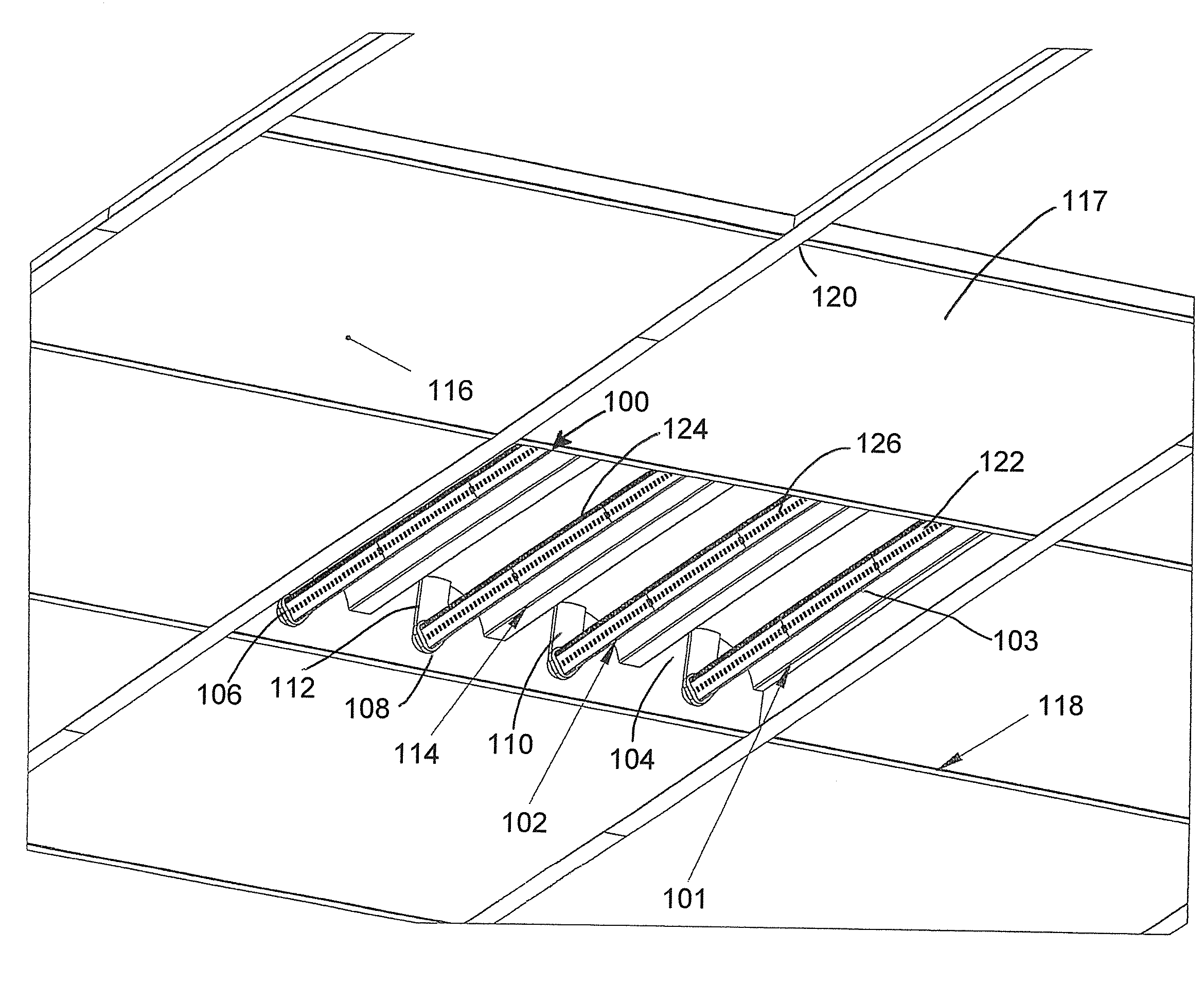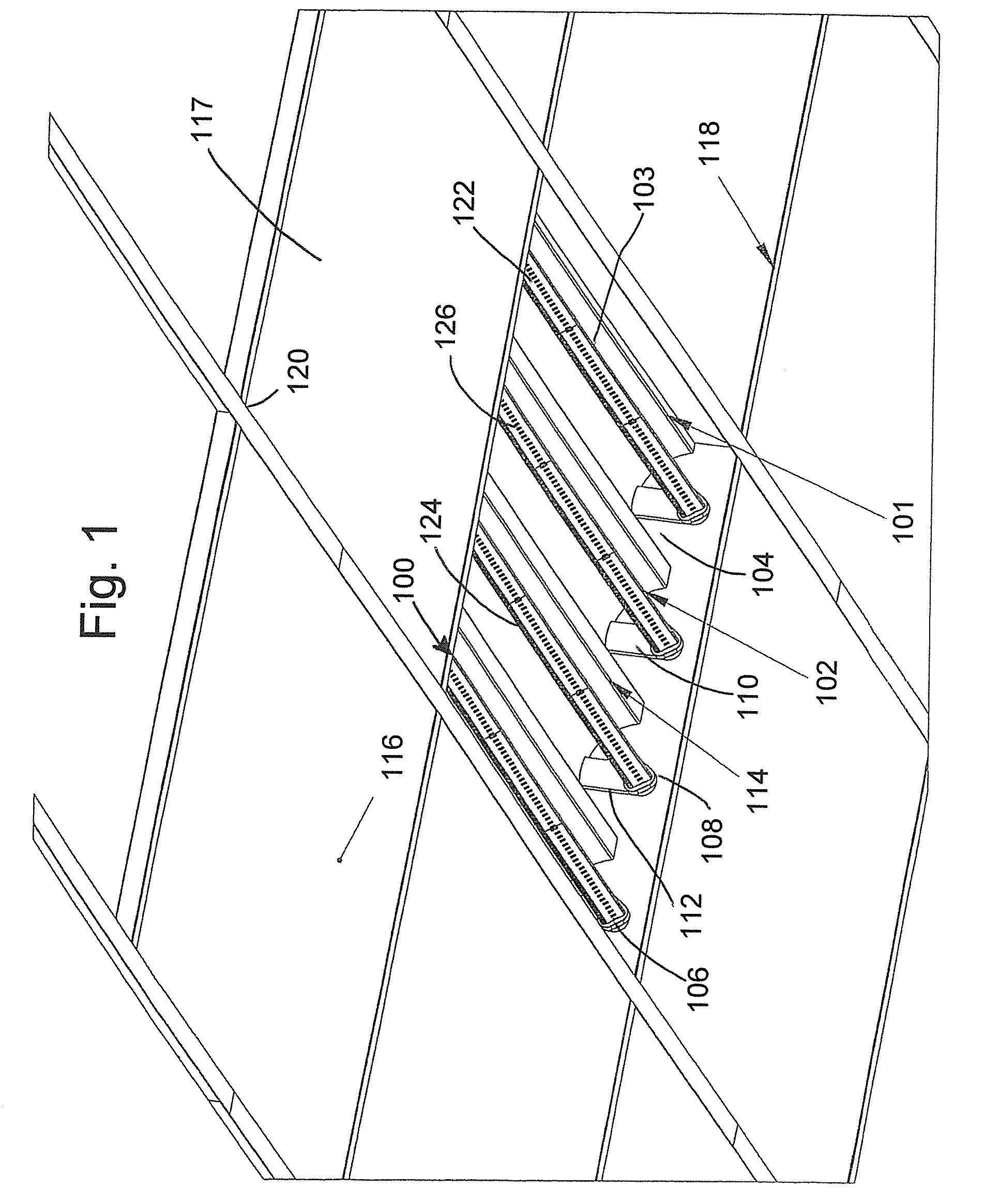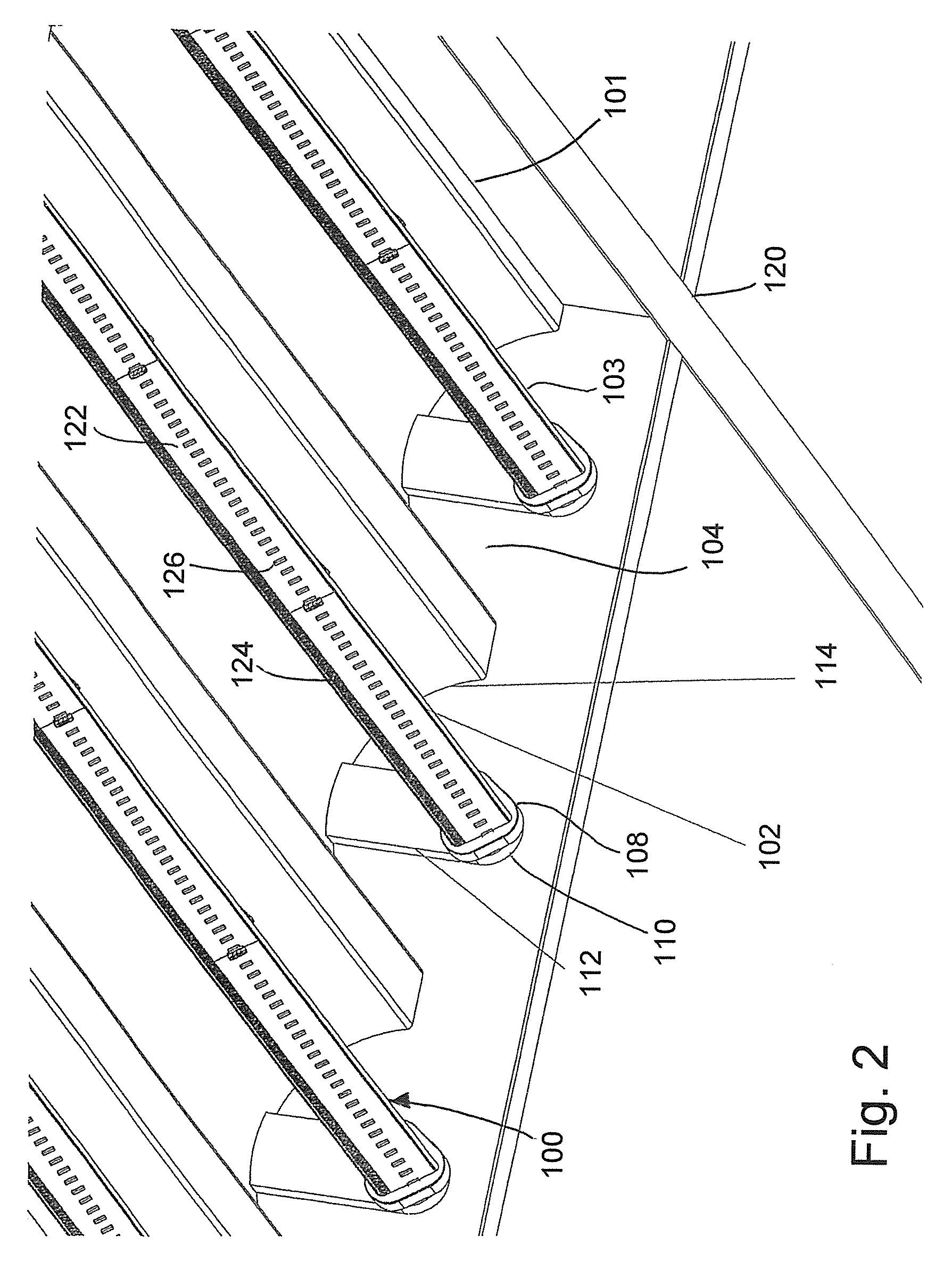Non-curvilinear LED luminaries
a technology of led luminaires and non-curvilinear lines, which is applied in the field of led lighting, can solve the problems of mercury exposure, inconvenient manufacturing and installation, and inefficient incandescent light bulbs, and achieve the effects of convenient manufacturing and installation, enhanced led lighting, and convenient and safe manufacturing
- Summary
- Abstract
- Description
- Claims
- Application Information
AI Technical Summary
Benefits of technology
Problems solved by technology
Method used
Image
Examples
example
[0128]In this case, the emitter board: driver combination:
[0129]
A A AB B BC C C
if sub-driver A, B or C fails, or any emitter in the string, one third of the light goes away on that whole side. However, the real wiring would look like this:
[0130]
A B CC A BB C A
Now if or when one driver sub circuit fails, two-thirds of the light remains and the dead spot revolves around the lamp so there is only a dim spot and not a black out.
[0131]Parallel traces can be used in the preferred arrangement. The boards can be made with the traces pre-fabricated. Parallel traces are utilized when needed to get the power to the emitters in an electrically efficient way. The advantage of using parallel traces means is the emitters are all driven at exactly the same current and power level. That is not the case in most conventional designs. A further advantage of the arrangement of parallel-series wiring is that we can run our lighting at higher voltage and lower current so that it is more efficient regardle...
PUM
 Login to View More
Login to View More Abstract
Description
Claims
Application Information
 Login to View More
Login to View More - R&D
- Intellectual Property
- Life Sciences
- Materials
- Tech Scout
- Unparalleled Data Quality
- Higher Quality Content
- 60% Fewer Hallucinations
Browse by: Latest US Patents, China's latest patents, Technical Efficacy Thesaurus, Application Domain, Technology Topic, Popular Technical Reports.
© 2025 PatSnap. All rights reserved.Legal|Privacy policy|Modern Slavery Act Transparency Statement|Sitemap|About US| Contact US: help@patsnap.com



